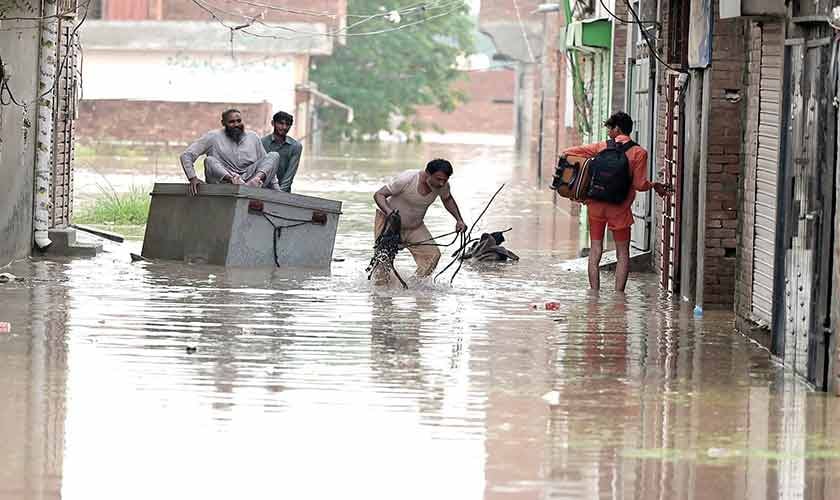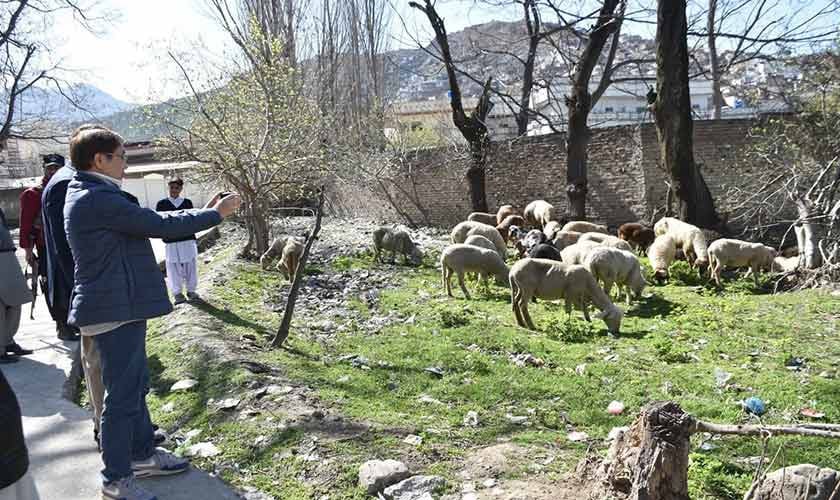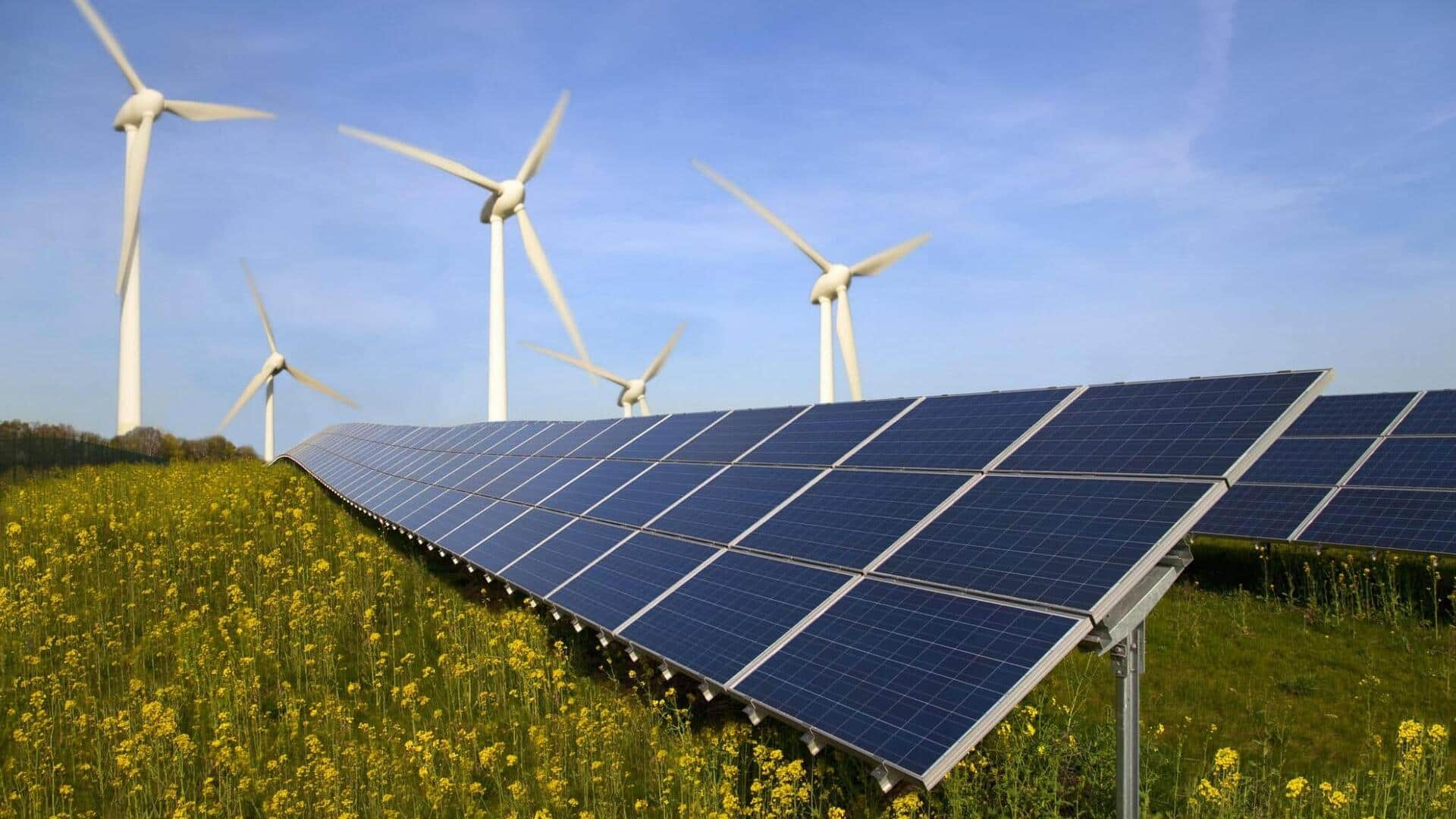In recent years, Lahore has witnessed devastating rains ravaging the city and its suburbs, especially the settlements along the banks of the Ravi River. This year was no different. A single cloudburst can decimate lives and properties, making urban flooding a recurring phenomenon in the city.
For the Water and Sanitation Agency (WASA), this situation translates into a tremendous workload. After heavy showers, parts of Lahore become inundated, turning some areas into no-go zones that require emergency workers to evacuate stranded residents. Roads and streets often get engulfed, drains overflow, and vehicles are submerged. In many places, it becomes difficult even to wade through the water.
Despite repeated claims and promises by past and present WASA officials, the crisis appears to have deepened over time. Ghufran Ahmed, the incumbent WASA Managing Director, shares that the agency has launched numerous initiatives to tackle the issue. So far, 52 schemes have been planned at an estimated cost of Rs 25.06 billion. Of these, 10 schemes costing Rs 7.4 billion focus specifically on rainwater storage.
Old sewers, which have exceeded their lifespan, are being replaced through 26 schemes with a budget of Rs 9.16 billion. Additionally, six projects aimed at replacing 55 outdated machines have been initiated, costing Rs 1.70 billion. One of the key undertakings, the construction of the Haji Camp Drain, is budgeted at Rs 4.10 billion.
Ahmed also highlights an extensive development program for Lahore that has recently kicked off. This ambitious plan includes 252 schemes, with a total budget of Rs 41.35 billion. Of this amount, Rs 21.05 billion has already been allocated.
### Challenges and Future Projects
The challenges faced by WASA are multifaceted. Mudasser Javed, Director of Planning and Engineering at WASA, explains that Lahore’s infrastructure is weak, and rapid urbanization has placed immense pressure on the city’s drainage system.
To address these challenges, a Rs 49.27 billion project has been designed to build a trunk sewer in line with Lahore’s Master Plan. The trunk sewer will span 28 kilometers, with widths ranging from 5 to 12 feet, employing modern trenchless technology. A disposal station with a capacity of 600 cusecs is also part of this project. This proposal has been submitted to the Executive Committee of the National Economic Council (ECNEC) for approval, with expected funding from the Asian Infrastructure Investment Bank.
### Financial and Administrative Hurdles
Financing development projects remains a significant challenge for WASA. According to their documents, the monsoon grant has been frozen at Rs 425 million since 2017. This inadequate funding hampers regular drain maintenance. The agency has requested an increase in this grant to Rs 1 billion.
There are other pressing problems as well. Overlapping jurisdiction among various agencies responsible for water supply, sewerage, and drainage creates confusion and delays. WASA has recommended consolidating all these services under a single agency to improve efficiency.
Solid waste disposal into drains and sewers exacerbates flooding issues. Strict enforcement is crucial to prevent dumping into these waterways.
### Innovative Solutions and Initiatives
Ahmed points out that Lahore’s 195 parks and open spaces are situated on high ground, making them unsuitable for rainwater storage. The proposed solution is to lower these parks so they can serve as holding areas for rainwater.
WASA has initiated several projects, including 52 schemes costing Rs 25.06 billion. Of these, 10 schemes focus on enhancing rainwater storage capacity.
Poorly designed road gradients cause rainwater to form puddles and stagnate, worsening drainage issues. Road agencies have been instructed to create proper catch pits to address this problem. Additionally, the presence of stray cattle contributes to sanitation issues and needs to be addressed by relocating them.
### Progress in Park and Greenbelt Modifications
In recent months, WASA has begun lowering the ground levels of 140 parks. Among these, 66 are designated as high priority, 43 as medium priority, and 32 as low priority. So far, 13 parks have had work completed, progress is underway in seven, and 120 are pending.
The plan is to keep the parks approximately two feet below road level, allowing rainwater to flow into them naturally. Similarly, greenbelts are being lowered as well. Of the 54 greenbelts identified, 41 are high priority, 10 medium, and three low priority.
These efforts are already showing results. At Gol Bagh Park in Shadbagh, lowering the ground level by one foot reduced water ponding from six inches (which took two hours to clear) to three inches that clears within an hour. In Subhan Park, Tajpura, lowering the ground by two feet eliminated ponding entirely, whereas before, six inches of water would remain for three hours.
### Drainage System Overview
WASA manages an extensive drainage network comprised of several major drains, including:
– Shalimar Escape Channel: 13.44 kilometers long with a capacity of 1,000 cusecs.
– Upper Chhota Ravi Drain: Nearly 5 kilometers long, carrying up to 1,480 cusecs.
– Lower Chhota Ravi Drain: About 5 kilometers with a capacity of 100 cusecs.
– Cantt Drain: Approximately 29 kilometers long, carrying 1,340 cusecs.
– Sattu Katla Drain: 17 kilometers long with a capacity of 800 cusecs.
– Shahdara Drain: 7 kilometers long, carrying 260 cusecs.
– Charrar Drain: 18 kilometers long, capacity of 800 cusecs.
To manage these drains, WASA possesses a large fleet of mobile machinery, including 40 suction machines, 56 dump trucks, 41 jet machines, 3 cranes, 24 water bowsers, 14 excavators, 134 dewatering sets, and 95 backhoe loaders and trolleys. Ahmed confirms that additional machines are being acquired to strengthen this fleet.
### Vision for the Future: Master Plan 2050
At the core of WASA’s strategy to shield Lahore from urban flooding is the Master Plan 2050. This plan considers the city’s current and future needs, including expected vertical expansion.
A key objective is to separate sewage from stormwater completely and phase out the use of lift stations. According to Ahmed, this will enable stormwater channels to function more efficiently and resist the impacts of climate change.
During the dry season, the drains are envisioned to transform into waterfront recreational areas, enhancing the city’s aesthetic appeal. Improved drainage will also reduce air pollution caused by stagnant water.
WASA’s service area is set to expand from the current 248 square kilometers, serving 8.7 million people, to 477 square kilometers, catering to an estimated 23.3 million residents by 2050. Enhanced sewage treatment will protect groundwater, improve aquatic life, and create more livable communities.
### Expert Opinions and Recommendations
Urban planner Qaswar Abbas highlights several local factors contributing to flooding, including road depressions, unfinished road cuts, potholes, raised green belts, and missing gratings. Outdated or absent infrastructure, along with the mixing of stormwater and sewage, further worsens the situation.
To resolve these issues, Abbas suggests that WASA should increase rainwater storage capacity using underground tanks and tunnels, utilize low-lying grounds and greenbelts, and promote rainwater harvesting. Although relevant bylaws already exist, he emphasizes the need for stricter enforcement to make a tangible difference.
—
Lahore’s battle against urban flooding is ongoing, with significant challenges but also promising initiatives underway. The concerted efforts by WASA, supported by adequate funding and improved coordination among agencies, aim to safeguard the city’s future and make it more resilient to climate change.
https://www.thenews.com.pk/tns/detail/1345142-flood-money


